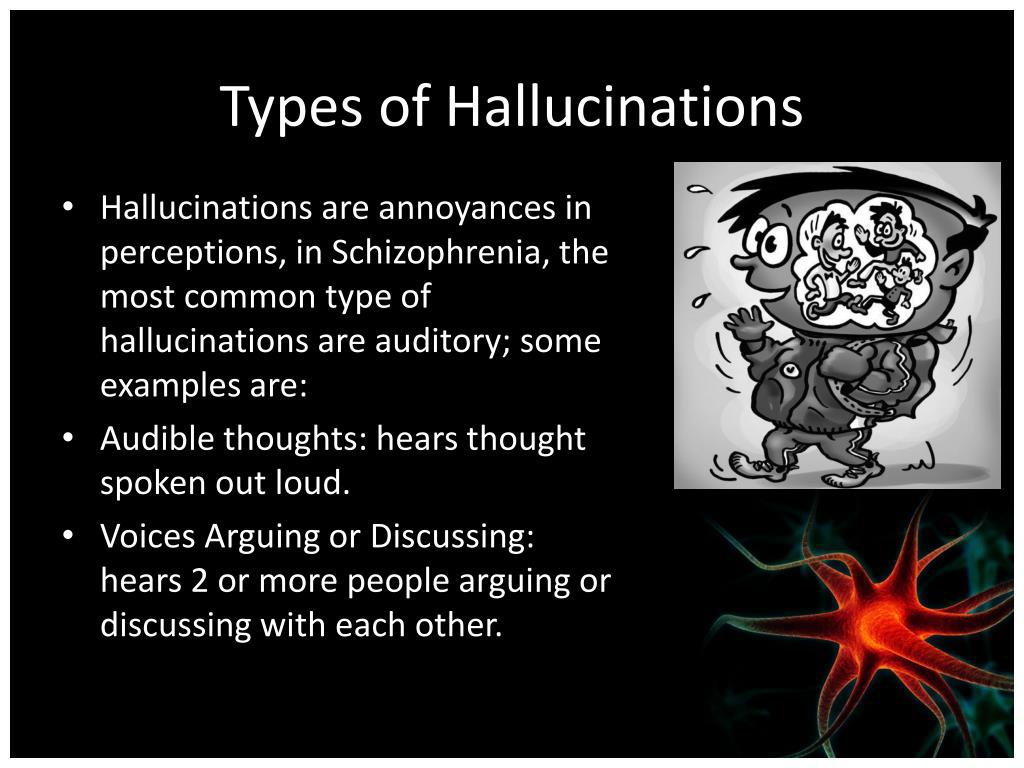


Do not argue with the person about what he or she sees or hears. Is the hallucination upsetting? Is it leading the person to do something dangerous? Is the sight of an unfamiliar face causing the person to become frightened? If so, react calmly and quickly with reassuring words and a comforting touch. First, assess the situation and determine whether the hallucination is a problem for the person or for you. Certain antipsychotic drugs like olanzapine and risperidone are prescribed for treatment of hallucinations.When responding to hallucinations, be cautious.Education and counseling the patient and family to help cope with the hallucinations can help.Rehabilitation programs can help people get over their addiction to alcohol and drugs.


Drugs causing hallucinations, like cocaine, LSD, etc.Stress management, regular exercise, healthy eating and adequate sleep are some of the simple measures that can prevent hallucinations if they are less severe.For severe hallucinations, antipsychotic medications may be prescribed. Some measures can be taken to manage or prevent hallucinations. The treatment of hallucinations involves treating the underlying cause that may be organic or psychiatric. What is the Treatment for Hallucinations? Do not argue with them or rush them up to be quiet.Distract the person from these feelings in a very gentle manner and make them feel relaxed.Assure the person that the voices or any other stimulus will go away shortly.Ask whether there is anything you can do to help them.Ask them to describe what they are seeing or feeling.Call out the person’s name quietly and be with them.
#Hallucination example how to#
How to help a person who is having hallucinations Experiences like floating, rising above the ground or rolling on the floor are some of the examples of proprioceptive hallucinations. Proprioceptive – Sensation of position of body parts in relation to the body: The sensation of the limbs being in a different location from the physical body.This condition is known to occur in temporal lobe epilepsy. Usually, these hallucinations are unpleasant flavours like rotten eggs, vomit, etc. Gustatory - Digestive system: A gustatory hallucination is the perception of tasting something, in the absence of the material tasted.Tactile hallucination in phantom limb refers to the pain felt in a limb that has been amputated.Conditions such as Parkinson’s disease, Ekbom’s syndrome, delerium tremens and schizophrenia present with tactile hallucinations. Tactile hallucinations can be the feeling of insects or small animals crawling over their body or experiencing the feeling of being kissed or someone lying by their side. Tactile – Sensation of touch: The false sensation of physical contact with an imaginary object is called a tactile hallucination.Olfactory hallucinations can also occur in the absence of any detectable nerve damage. This damage can be a result of a brain tumour, neurosurgery, viral infection or exposure to toxic drugs. Olfactory hallucinations can occur due to damage of the nervous tissue carrying smell sensations from nose to the brain.While phantosmia is an olfactory hallucination, parosmia refers to an olfactory illusion. Commonly perceived odors include smells such as rotting fish, feces, smoke, cooking food, flowery smells, etc. Olfactory – Nose: Smelling of odors that are not really present is called olfactory hallucinations, also called “phantosmia”.Complex hallucinations are lifelike images of things, animals and people. Simple visual hallucinations are formless visual hallucinations, i.e., seeing lights, geometric shapes, colors and some indiscrete objects in the absence of any actual stimulus. Visual – Sight: Seeing things that do not actually exist refers to visual hallucinations.Hallucinations can be classified in terms of the sensory modality that they occur. The term “Hallucination” was coined by Sir Thomas Browne in 1646, derived from the Latin word “ alucinari”, that means to wander in the mind.


 0 kommentar(er)
0 kommentar(er)
